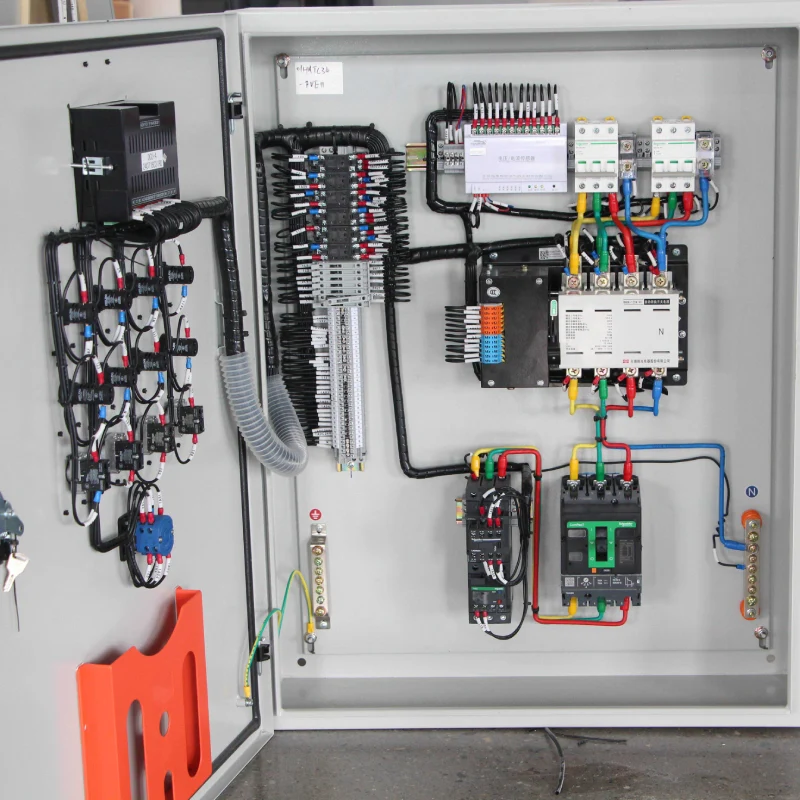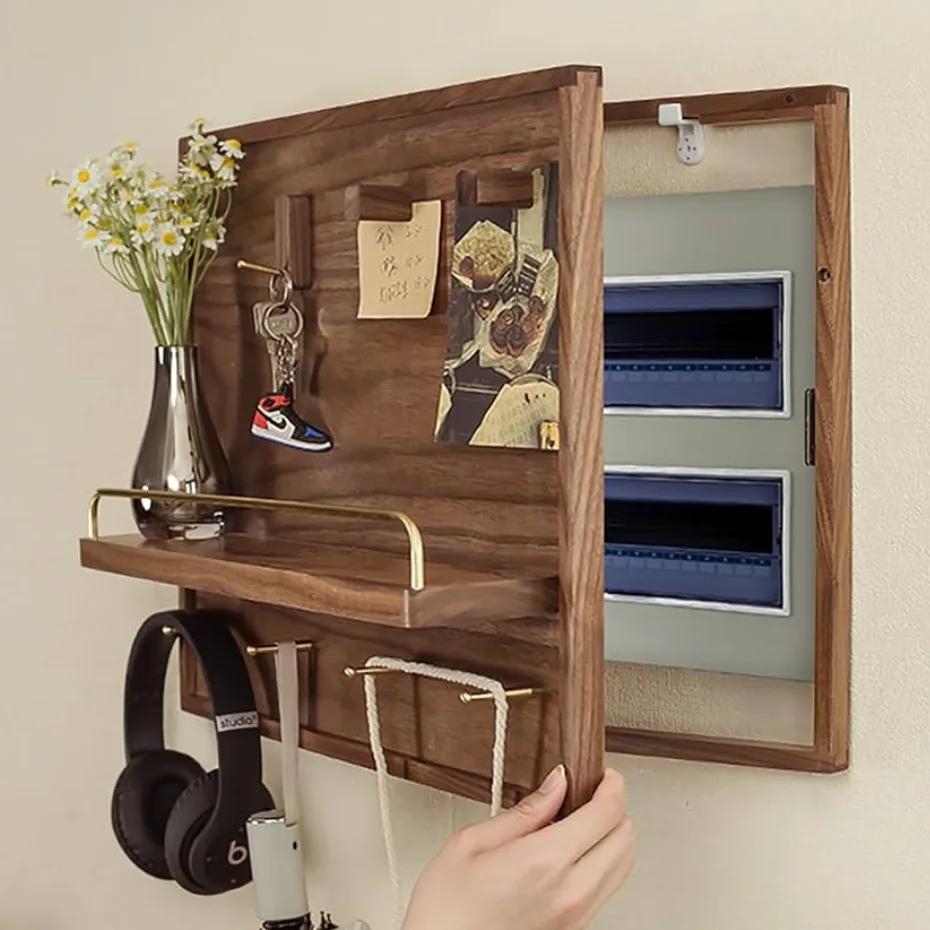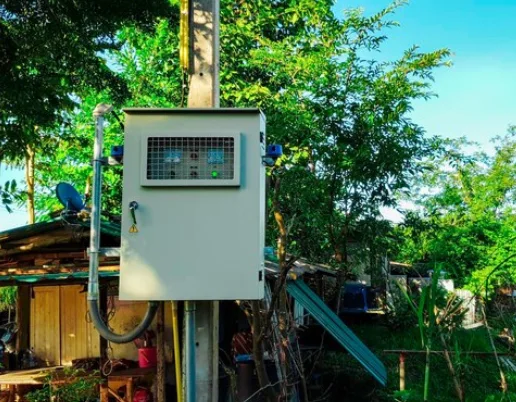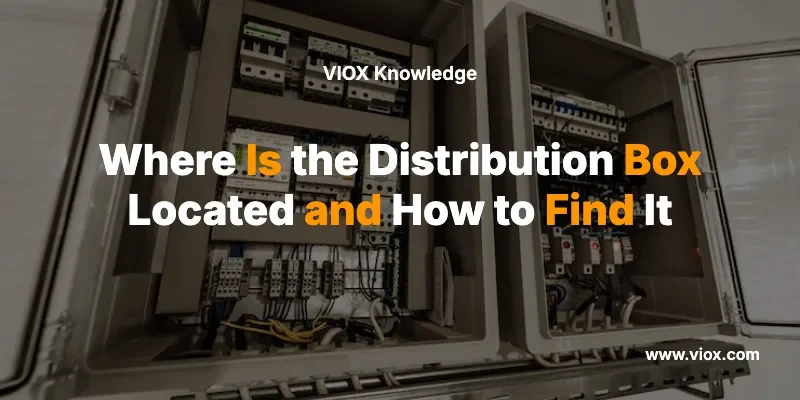When your power goes out or a circuit breaker trips, knowing exactly where your distribution box is located can save you time, money, and frustration. Whether you call it an electrical panel, breaker box, or circuit breaker panel, this crucial component controls all the electricity in your home—and every homeowner should know how to locate it.
What Is a Distribution Box and Why You Need to Find It

ក ប្រអប់ចែកចាយ, commonly known as an electrical panel or breaker box, serves as the central control hub for your home’s electrical system. The main service panel is typically located in a home’s basement or utility room, though locations can vary significantly based on home design and local building codes.
An electrical panel controls the flow of electricity to specific circuits around the house, and includes a protective fuse or circuit breaker for each circuit. Think of it as the command center that safely distributes power throughout your home while protecting against electrical overloads and short circuits.
Common Reasons to Locate Your Distribution Box
Understanding when and why you need to access your electrical panel helps highlight its importance:
ការស្តារថាមពលឡើងវិញ៖ The main reason you need to locate your panel is to turn power back on to a circuit. If a fuse has blown due to an overloaded outlet in your home, you’ll need to locate the panel in order to replace the fuse and restore power.
Emergency Situations: During floods, fires, or electrical emergencies, you need immediate access to shut off power to your entire home using the main breaker.
Home Maintenance: Any electrical work in your home requires turning off power to specific circuits, which you control through the distribution box.
Circuit Troubleshooting: When outlets stop working or lights go out in specific areas, you’ll need to identify and reset tripped breakers.
Where Is the Distribution Box Located? Common Placement Areas
Indoor Locations

Basements and Utility Rooms
The main service panel is typically located in a home’s basement or utility room. These areas provide easy access while keeping the panel out of sight during daily activities.
យានដ្ឋាន៖
If you live in a house, then typically your electrical panel will be located outside of the house or in the garage. Garages offer convenient access and sufficient space for electrical work.
Kitchen and Pantry Areas:
The electric service panel may be tucked away in a built-in pantry adjacent to the kitchen or a utility closet. Some panels are strategically placed behind appliances or in kitchen utility areas.
Closets and Hallways:
For reasons of aesthetics and security, domestic circuit breaker panels and consumer units are normally located in out-of-the-way closets, attics, garages, or basements. However, building codes prohibit installation in clothing closets.
Outdoor Locations

Exterior Walls Near Electrical Meter:
Breaker boxes are commonly found near the electric meter, often on an exterior wall facing the street or in a designated utility area on your property. This placement allows easy utility access and emergency shutoff.
Side or Rear of House:
Depending on the layout and local regulations, they may also be located on the side or rear of the house. The specific location often depends on transformer placement and utility company requirements.
How to Find Your Distribution Box: Step-by-Step Guide
Step 1: Know What You’re Looking For
The panel itself is a rectangular looking metal box, usually mounted into the walls of your home. This rectangle should have a cover on it so that it looks like a flat piece of wall or a metal box.
Visual Characteristics:
- Rectangular gray or black metal box
- Approximately 14-20 inches wide, 20-40 inches tall
- Hinged door or removable cover
- Usually mounted flush against a wall
- May have warning labels or utility company markings
Step 2: Start with the Electrical Meter
When I have needed to find electrical panels in the past, starting outside, near the place that the city powerline connects to the house has always been a good place to begin the search.
Follow These Clues:
- Locate your electrical meter (usually outside)
- Your main electrical panel is typically near your electric meter, which is how your utility measures how much electricity you use
- One way to find the panel is to go outside and locate the service drop and service head on your roof. The service panel should be directly below
- Check the nearest interior wall to the meter location
Step 3: Search Common Indoor Areas
Systematic Indoor Search:
- Basement: Check walls near the foundation, especially areas closest to the electrical meter
- យានដ្ឋាន៖ Look along interior and exterior walls, particularly near the garage door or utility areas
- Utility Room: Search near water heaters, furnaces, or laundry equipment
- ផ្ទះបាយ៖ Check pantries, utility closets, or areas behind appliances
- សាលធំ៖ Look for recessed panels in hallway walls
Step 4: Check for Multiple Panels
Sometimes, there’s also a “sub-panel” that controls various circuits in a different area. Make sure you identify the main electrical panel, which controls power to your entire home.
Distinguishing Main from Sub-Panels:
- Main panels are typically larger and closer to the electrical meter
- If your home has multiple electrical panels, the main electrical panel is typically the one that’s closest to your electrical meter
- The main panel contains the main breaker that can shut off power to the entire house
Safety Tips for Locating and Accessing Your Distribution Box
ការប្រុងប្រយ័ត្នសុវត្ថិភាព
Locate your electrical panel when it’s light outside or when the lights are on. If you’ve never located your panel and the power goes out in the night, you will be hunting and fumbling with a flashlight.
Essential Safety Guidelines:
- Never touch electrical panels with wet hands
- Ensure adequate lighting when working with the panel
- Keep the area around the panel clear of stored items
- If your electrical panel does not have a cover be sure to contact an electrician to have them inspect and install a cover, especially because an uncovered panel can prove to be extremely dangerous
Understanding Panel Components
Once you locate your distribution box, you’ll see several key components:
ឧបករណ៍បំបែកសៀគ្វី៖ These are called circuit breakers, which will be in the center of the panel itself and there can be as many as 50+ or as few as 10. These circuit breakers are the “regulators” of power in your home and trip if there is an electrical problem in any part of your home.
Main Breaker: The largest switch, usually at the top or bottom, controls power to the entire home.
Labels: Next to the breakers there may be writing or a place for writing, this is to help identify which breakers control power in the different parts of your home or apartment.
Code Requirements and Proper Distribution Box Placement
National Electric Code (NEC) Requirements
NEC 110.26 states that the electrical panel and equipment must be placed in a location with proper clearance around them. There should be at least a 3 feet clearance in front of the electrical panels.
Clearance Requirements:
- Front clearance: Minimum 3 feet of clear space
- Side clearance: At least 30 inches on both sides
- Height requirements: The electrical box height should be 4-feet tall (off the ground) at a minimum—with an average height of 5–6 feet
- Door operation: Panel door must open at least 90 degrees
Prohibited Locations
Areas Where Panels Cannot Be Installed:
- Bathrooms or similar wet locations
- Clothing closets
- Areas with insufficient working space
- Locations that can be blocked by stored items
Troubleshooting: When You Can’t Find Your Distribution Box
Check Apartment-Specific Locations
If you live in an apartment the location of your electrical panel also could vary, but is most likely in side the apartment, usually in the kitchen or bathroom areas.
Look for Hidden or Disguised Panels
Some distribution boxes may be:
- Painted to match wall colors
- Located behind removable panels
- Positioned in unexpected utility areas
- Concealed in built-in cabinetry (though this violates code)
ពេលណាត្រូវហៅអ្នកជំនាញ
If you cannot locate your distribution box after thorough searching, contact a licensed electrician. They can help identify your electrical panel location and ensure it meets current safety codes.
Maintaining Access to Your Distribution Box
Keep the Area Clear
Make sure the area around your electrical panel is clutter-free. There must be 3 feet of clearance in front of your electrical panels, and the door must be able to open at least 90 degrees.
Ensure Family Awareness
Make sure everyone in the home knows the location of your electrical box. You can perform a mock fire drill with your family so everyone knows the ins and outs of your electrical panel.
Label Everything Clearly
Take time to properly label each circuit breaker so family members can quickly identify which breaker controls specific areas or appliances during emergencies.
Conclusion: Taking Control of Your Home’s Electrical System
Knowing where your distribution box is located and how to access it safely puts you in control of your home’s electrical system. Whether you need to reset a tripped breaker, shut off power for maintenance, or respond to an emergency, quick access to your electrical panel can prevent minor issues from becoming major problems.
គន្លឹះសំខាន់ៗ៖
- Most distribution boxes are located in basements, garages, utility rooms, or outside near the electrical meter
- Always prioritize safety when locating and accessing electrical panels
- Maintain proper clearance and ensure family members know the panel location
- Contact professionals when you need help locating or working with electrical systems
By following this guide, you’ll never have to wonder “where is the distribution box located” again. Take a few minutes today to locate your electrical panel, test your knowledge of its components, and ensure your family is prepared for any electrical situation that may arise.
Frequently Asked Questions About Distribution Box Locations
Can an electrical panel be located in a bedroom?
According to the NEC, electric panels are allowed inside bedrooms, but it’s advised homeowners to place beds a reasonable distance from the breaker box itself. While not prohibited by code, many homeowners prefer to move panels out of bedrooms for aesthetic and safety reasons.
Is it safe to have an electrical panel in a closet?
NEC 240.24(D) states that overcurrent devices shall not be located in the vicinity of easily ignitable material, such as in clothes closets. However, utility or storage closets that don’t contain flammable materials may be acceptable if they meet clearance requirements.
Can electrical panels be installed in bathrooms?
NEC 240.24(E) states that in dwelling units, dormitories, and guest rooms or guest suites, overcurrent devices shall not be located in bathrooms. This is strictly prohibited for safety reasons due to moisture and potential water exposure.
What are the minimum clearance requirements around an electrical panel?
NEC 110.26 states that the electrical panel and equipment must be placed in a location with proper clearance around them. There should be at least a 3 feet clearance in front of the electrical panels. Additional requirements include:
- Minimum 30 inches of lateral clearance
- Panel door must open at least 90 degrees
- Adequate headroom (6.5 feet minimum)
How much does it cost to move an electrical panel?
The cost to move an electrical panel is around $1,500 to $2,000 on average. This significant expense is due to the complex wiring modifications required and the need for permits and professional installation.
Can electrical panels be installed outside?
Yes, electrical panels can be installed outdoors, but they require weatherproof enclosures and proper protection against the elements. Breaker boxes are commonly found near the electric meter, often on an exterior wall facing the street or in a designated utility area on your property.
What is the required height for electrical panel installation?
The height should not be higher than 6’7″ or lower than 4′, while there is a 12″ clearance from either side of the meter. This ensures the panel is accessible to adults while remaining safe from children.
What if I can’t find my electrical panel in my apartment?
If you live in an apartment the location of your electrical panel also could vary, but is most likely inside the apartment, usually in the kitchen or bathroom areas. Check utility closets, hallway areas, or contact your building management for assistance.
Are there any other prohibited locations for electrical panels?
A panel cannot be located: 1) Where exposed to physical damage, 2) In the vicinity of easily ignitable material, 3) In bathrooms, 4) Over steps. Additionally, panels cannot be installed in fire-rated walls or areas that don’t meet clearance requirements.
Can I install an electrical panel in my laundry room?
Unlike clothes closets, there is no specific language in the NEC saying you cannot put an electrical panel in a storage room, including laundry rooms. However, you must ensure adequate clearance around washers and dryers and that the area meets all safety requirements.
Do I need a permit to move my electrical panel?
Because extending or shortening wires throughout the home is a significant undertaking, you’ll likely need a permit from your local municipality. You’ll also need to contact the electric company to ensure the move is safe.
Why should I know where my electrical panel is located?
Make sure everyone in the home knows the location of your electrical box. You can perform a mock fire drill with your family so everyone knows the ins and outs of your electrical panel. This knowledge is crucial for emergency situations, power outages, and routine maintenance.
ពាក់ព័ន្ធ
ប្រអប់ចែកចាយ និងការណែនាំជ្រើសរើស
ស្វែងយល់ពីភាពខុសគ្នា៖ ប្រអប់ចែកចាយអគ្គិសនីធៀបនឹងប្រអប់ចែកចាយថាមពល
ប្រអប់ចែកចាយ AC ទល់នឹង DC Distribution Box: ការណែនាំដ៏ទូលំទូលាយ
ប្រអប់ចែកចាយធៀបនឹងប្រអប់ផ្សំ៖ ភាពខុសគ្នាសំខាន់ៗ និងការប្រើប្រាស់ក្នុងប្រព័ន្ធអគ្គិសនី


